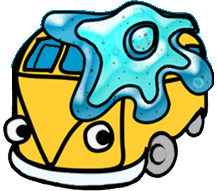
Daphnia: Crustacean, Arthropod
Pond Water Animals: Not to be confused with Protists!
The Daphnia is not a protist, but part of the Kingdom Animalia. View more pond water animals here.

Daphnia, also called "water fleas" are found in the order Cladocera and are sometimes called Cladocerans. Daphnia are crustaceans and related to lobsters, crabs and shrimp. They are invertebrates with a hard outer shell and are different from another type of "water flea" the brine shrimp (Artemia). They swim freely about and are from 1/2 to 3mm long.
Daphnia have a single compound eye and there are normally five or six appendages attached to the thorax. The body is compressed and enclosed in a flattened, transparent carapace. The Daphnia moves by beating its antennae which are moved by large muscles. Daphnia are slightly denser (heavier) than water so without active movement, they settle to the bottom. They feed on algae, protozoa, bacteria, and decaying organic material. Most are filter feeders that consume phytoplankton which they remove from the water using their setose thoracic appendages. A few are carnivores preying on other cladocerans.
For most of the year the population consists entirely of females which reproduce asexually. If you study Daphnia, you will likely see eggs inside the transparent body. As winter approaches males appear and sexual reproduction occurs typically involving the production of resistant, over-wintering eggs. These eggs are usually enclosed in an envelope that rests in the sediment. When spring comes, the eggs hatch.
Daphnia are food for Hydra and small fish.
